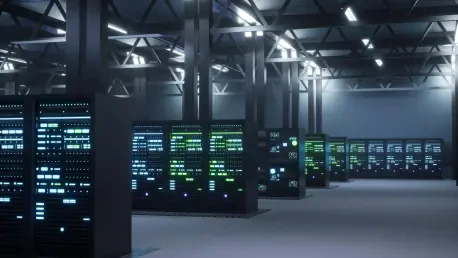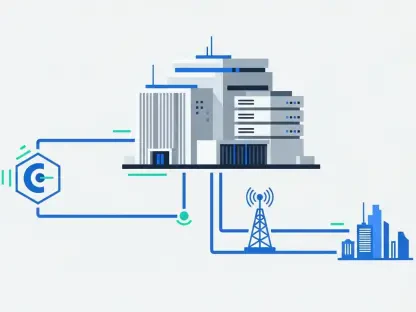As Southeast Asia emerges as a hotbed for digital transformation, the Philippines stands at a pivotal moment where it could position itself as a key destination for AI-driven data center investments, provided it tackles some daunting challenges. The region’s demand for data center capacity is skyrocketing, driven by the energy-hungry nature of artificial intelligence workloads, and countries are racing to build the infrastructure needed to attract global hyperscalers. Yet, the Philippines grapples with persistent issues in power supply and regulatory frameworks that threaten to derail its ambitions. With neighboring nations like Indonesia and Malaysia already making strides in energy expansion and smart policies, the urgency for the Philippines to act has never been greater. This pressing scenario raises critical questions about whether the country can bridge its energy gaps and create a conducive environment for the digital economy to thrive.
Addressing Energy Challenges for Digital Growth
Power Supply as the Backbone of AI Infrastructure
The cornerstone of establishing the Philippines as a viable hub for AI data centers lies in ensuring a reliable and sufficient power supply, a challenge that remains unmet amidst growing digital demands. AI technologies, far more energy-intensive than traditional cloud operations, require robust electrical infrastructure to support continuous, high-capacity computing. Reports from industry experts highlight that without a stable grid, the country risks being overlooked by major tech investors seeking locations for their next data hubs. The current state of the national grid, plagued by instability and frequent outages, poses a significant barrier. Addressing this issue necessitates not just incremental fixes but a comprehensive overhaul of energy generation and distribution systems to meet the unprecedented needs of modern digital facilities. Only through such transformative efforts can the Philippines hope to compete on a regional scale and secure a foothold in the global AI economy.
Grid Modernization and Capacity Expansion
Beyond mere availability, the modernization of the power grid stands as a critical step toward supporting the infrastructure required for AI data centers in the Philippines. Aging systems and limited base-load capacity have long hindered the country’s ability to provide consistent electricity, particularly in areas eyed for potential data center development. Industry leaders have called for accelerated development of new power plants and the integration of advanced technologies to enhance grid reliability. This includes upgrading transmission lines and adopting smart grid solutions to manage peak loads effectively. Additionally, aligning energy projects with digital growth zones could prevent bottlenecks that deter investment. The Department of Energy faces mounting pressure to prioritize these initiatives, as delays in capacity expansion could cede ground to neighboring countries already ahead in the race. A forward-thinking energy strategy is essential to ensure that power infrastructure keeps pace with the rapid evolution of digital technologies.
Policy Reforms to Attract Global Investment
Streamlining Regulatory Processes for Power Projects
A significant hurdle in positioning the Philippines as a leader in AI data center investments is the sluggish regulatory environment that often delays critical power projects. Lengthy approval processes for power supply agreements, overseen by the Energy Regulatory Commission, have been identified as a major bottleneck in infrastructure development. Simplifying these procedures could drastically reduce the time it takes to bring new energy projects online, thereby enhancing the country’s appeal to international tech giants. Experts advocate for a more efficient permitting system that minimizes red tape while maintaining necessary oversight. Such reforms would not only expedite the rollout of essential power infrastructure but also signal to investors that the Philippines is committed to fostering a business-friendly climate. Without swift action on regulatory streamlining, the nation risks missing out on the projected tripling of data center demand in Southeast Asia by the end of this decade.
Incentivizing Green Energy and Strategic Planning
Equally important to regulatory speed is the adoption of policies that incentivize sustainable energy solutions tailored to the needs of AI data centers in the Philippines. The global trend toward environmentally conscious investments means that hyperscalers often prioritize locations with access to clean energy options. Developing policies that support renewable energy projects, such as solar or wind, alongside competitive pricing structures, could set the country apart from regional competitors. Furthermore, strategic infrastructure planning must focus on creating power corridors in areas suitable for data center hubs, ensuring seamless integration of energy and digital needs. Collaboration between government bodies and private stakeholders is vital to align these efforts with long-term digital transformation goals. By embracing green energy and forward-looking planning, the Philippines can attract not only investment but also goodwill from tech firms committed to sustainability, positioning itself as a modern and responsible player in the global market.
Building a Future-Ready Digital Ecosystem
Lessons from Regional Competitors
Reflecting on the strides made by neighboring countries provides valuable insights into what the Philippines needs to prioritize in its journey toward becoming an AI data center hub. Nations like Indonesia and Malaysia have already invested heavily in expanding their energy infrastructure and crafting policies such as data localization laws that appeal to long-term investors. Their proactive approach to grid reliability and regulatory clarity has positioned them as frontrunners in the regional digital race. The Philippines, in contrast, has struggled with persistent energy bottlenecks that undermine its competitive edge. Observing these regional successes underscores the importance of aligning power development with digital ambitions. Learning from these examples, it becomes evident that a multi-pronged strategy focusing on energy stability and policy innovation is non-negotiable for the country to carve out a significant role in the AI economy.
Charting the Path Forward with Bold Action
Looking back, the discussions around the Philippines’ potential in the AI data center space reveal a clear consensus that bold, decisive action is imperative to overcome existing challenges. The path forward demands accelerated investments in power generation, with a keen focus on modernizing the grid to handle the intense demands of AI workloads. Simultaneously, policymakers must streamline regulatory hurdles, ensuring that energy projects move from planning to execution without unnecessary delays. Embracing green energy solutions also emerges as a critical differentiator to attract environmentally conscious investors. By integrating these efforts with strategic infrastructure planning, the Philippines can build a robust foundation for digital growth. The lessons learned emphasize that sustained collaboration between government and industry stakeholders is key to transforming energy challenges into opportunities, paving the way for a competitive stance in the global digital landscape.









